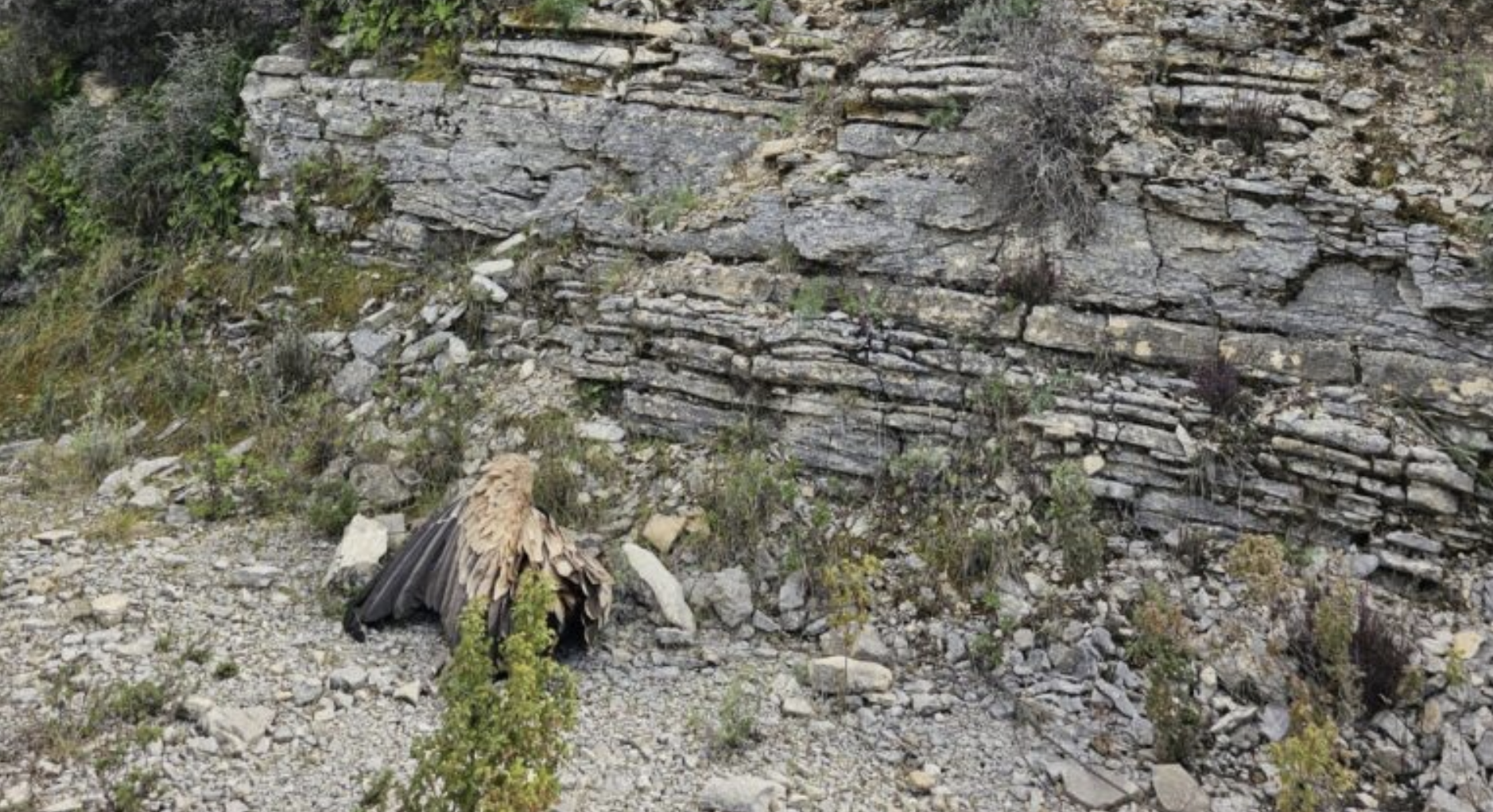A recently published research paper evidences a “catastrophic decline” in the Griffon Vulture population, in Kazakhstan. In just twelve years, the number of active nests in the Karatau mountains decreased by 95%. What are the reasons behind this decline?

From Europe to Asia, the Griffon Vulture covers an extensive territory
The Griffon Vulture (Gyps fulvus) is Europe’s most abundant species among the obligatory scavengers. Its home range spans from the Western Iberian Peninsula to the Himalayas in the East. Reintroduction projects to boost locally threatened subpopulations have been proven effective in France, Sardinia, and Bulgaria, with the species facing a growing tendency across Europe. The situation, however, is very different in Asian countries.
Kazakhstan lies on the northeastern corner of the Griffon Vulture distribution. Until the 20th century, it was considered a common species in the country, but researchers assume that it was probably mistaken for the Himalayan Vulture (Gyps himalayensis).


To study the species abundance in Kazakhstan and establish its status, the research team reviewed published data and validated it with fieldwork. They focused their monitoring efforts on the Karatau mountains, which hold the only large breeding population in the country. There are almost no records of the species breeding in other regions.

95% decrease in 12 years
The comparison between the number of occupied nests in 2010 and 2022 reveals a concerning trend. In 2022, only seven nests were found, four inhabited, a stark decline from the 74 nests recorded twelve years earlier.
“The number of active nests decreased by 18.5 times (by 95%) in comparison with 2010, and bird occurrence decreased by 75 times (by 99%) when comparing the number of encountered individuals/100 km: 12.4 ind./100 km in 2010 with 0.17 ind./100 km in 2022.”
© Kaptyonkina et al. 2023
The exact reason behind this drastic population decrease remains unknown. Yet, a prevalent threat persists: the use of non-steroidal anti-inflammatory drugs (NSAIDs) is still a common practice in Kazakhstan. Particularly, drugs containing diclofenac and ketoprofen have proven lethal to vultures, causing significant declines in subpopulations across various Asian countries.
The (continued) use of NSAIDs
In India, it took them almost fifteen years to understand why vultures were dying at such a fast pace. As nature’s clean-up crew, vultures have an essential role In maintaining healthy and functional ecosystems. The absence of scavengers in India and their ecological function led to increased human mortality due to pollution and a higher incidence and transmission of infectious diseases.
Although countries like Nepal, Pakistan and Bangladesh have learnt from India’s example, prohibiting the use of specific NSAIDs, in many others, the practice, whether or not legal, continues to happen. In Kazakhstan, there are no restrictions on the use of those compounds.
Other poisonous threat: baits for predators
Poison baits, often a measure directed at wolves and other predators, have an unintended yet devastating effect on vulture populations. The authors have randomly interviewed locals on the use of poison and found an abundance of 20% close to vulture breeding territories. Responders identify it as “rat poison”, very likely to contain carbofuran.
Does the livestock variation influence populational trend?
The use of NSAIDs and poison-baits were not the only factors leading to the Griffon Vulture population curb in the nineties. The decrease in domestic sheep, goats, and wild herbivores, such as the antelope (Saiga tatarica), has shrunk food availability for scavengers.
The number of small ruminants has been growing steadily over the past 20 years. Such an increase in the food supply would support stabilising the Griffon Vulture population. The main threat is not the lack of food availability.

Urgent action is needed
Despite the significant drop, Kazakhstan’s Griffon Vulture is not a protected species. Authors call for a total ban of NSAIDs by the recommendation of the Conservation of Migratory Species and firm control on the use of poison-baits for wolves. Determining pollution agents in the ecosystem and chemicals in vulture food is recommended, along with the long-term of the remaining breeding population and the analysis of their migratory routes with GPS transmitters.
Source: Alyona Kaptyonkina, Genriyetta Pulikova, Nurlan Ongarbayev, Igor Karyakin. Catastrophic Decline in the Griffon Vulture Population in the Karatau Mountains, Kazakhstan. Raptors Conservation Journal, December 2023.
Alyona Kaptyonkina and Genriyetta Pulikova presented this research at the European Vulture Conference held in Cáceres, Spain, in November 2023, Raptors Conservation.



